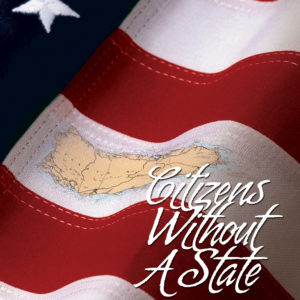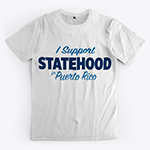In 1898, Puerto Rico was ceded by Spain to the United States at the end of the Spanish American War. After centuries under Spanish Rule, Puerto Rico came into the possession of the United States as part of the Treaty of Paris, which set the terms for the end of the war.
In 1900, Congress organized a territorial government under federal law without granting citizenship to the people living in Puerto Rico. After years of work by Puerto Ricans to gain citizenship and court cases debating whether Congress could keep Puerto Rico without granting citizenship to the people, Congress gave citizenship to the people of Puerto Rico just in time to draft 18,000 new citizens to fight in World War I.
In 1922, the Supreme Court decided that Congress could keep Puerto Rico and its citizens as a territory as long as they wanted to, with no obligation to resolve the status of the Island.
In 1952, Congress authorized a territorial constitution, saying in many documents that “The bill under consideration would not change Puerto Rico’s political, social, and economic relationship to the United States.” The local anti-statehood party claims a new non-territorial status under “commonwealth” label, even though the U.S. government made it clear that there was no change in the legal position of the territory.
In 1953, U.S. diplomats persuade the United Nations to remove Puerto Rico from the list of colonies, but record of proceedings include U.S. legal memo confirming supremacy of federal territorial law. The local anti-statehood party ignored the U.S. legal memo and declared a “commonwealth” bilateral pact between sovereign nation states, but this action had no legal effect.
In 1982, President Reagan stated that Puerto Rico is a territory and called for statehood or independence based on self-determination. In 1992, President Bush did the same. After several plebiscites with inconclusive results, the White House Task Force on Puerto Rico’s Status identified statehood or sovereign nationhood as the only constitutionally permanent non-territorial status options, and called for self-determination in a referendum offering an up or down vote on current territorial status, plus a second ballot question offering the choice between statehood and nationhood.
In 2012 another referendum was held, with certified results showing 54% vote to end current status, and 61% vote for statehood. The White House said this was “a clear result,” but anti-statehood leaders, including the governor elected at the same time, claim that the results of this referendum were also unclear. Congress took no action at that time.
In 2014, Congress passed and the President signed a bipartisan law funding a federally sponsored referendum on options certified as legally valid by the U.S. Attorney General to confirm 2012 vote for statehood, but the anti statehood party in Puerto Rico has so far blocked the referendum.
In 2015, the U.S. Department of Justice filed a brief in a Puerto Rico legal case which stated once again that Puerto Rico can not be sovereign as long as it remains a territory. The “enhanced commonwealth” option was once again declared unconstitutional by the United States government. As long as Puerto Rico is an unincorporated territory — and that is what Puerto Rico is, no matter what the current government would like to believe — Puerto Rico is shackled by its status.
Congress has the power in Puerto Rico. The people of Puerto Rico can influence Congress, but cannot redefine their relationship with the United States. As a state, Puerto Rico will have rights and powers that it does not and cannot have as a territory. Contact your representative in Congress. Puerto Rico is on their minds right now. They will be influenced by the voters they represent.
The information in this post is based on the timeline in Citizens without a State. This is a new book on Puerto Rico by Howard Hills.







No responses yet